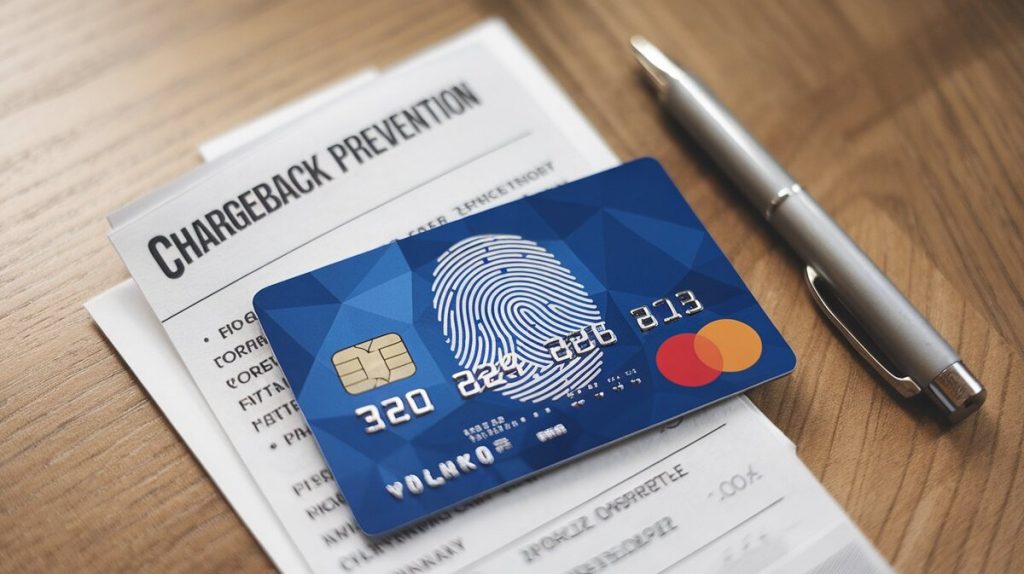Chargebacks are a growing concern for businesses in both eCommerce and retail. According to industry reports, 27% of merchants reported an increase in chargeback rates during 2023. The impact of chargebacks is not limited to lost revenue; they also lead to fees, operational delays, and penalties from payment processors like Visa and Mastercard. In this guide, we’ll explore the best chargeback prevention methods for 2024 that can help businesses protect their revenue and minimize disputes.
What Are Chargebacks and Their Impact?
A chargeback occurs when a customer disputes a transaction, and the bank reverses the payment. Businesses not only lose the sale but often incur additional fees. The average cost of a chargeback ranges from $15 to $25 per incident. The problem is compounded by the fact that only about 20% of chargeback disputes are resolved in favor of the merchant.
Top Chargeback Causes:
- Fraudulent transactions (true fraud and friendly fraud)
- Dissatisfaction with products or services
- Billing errors such as double charging or incorrect billing descriptors
- Miscommunication or lack of communication with customers
Effective Chargeback Prevention Methods
1. Clear Return, Refund, and Cancellation Policies
Having transparent return and refund policies reduces the chances of chargebacks. Display these policies prominently on your website and at checkout. Ensure the customer understands them before completing a transaction. This prevents disputes related to non-receipt or dissatisfaction with goods and services.
2. Accurate Product and Service Descriptions
Incorrect or misleading product descriptions are a common cause of customer dissatisfaction, leading to chargebacks. Ensure that all product and service descriptions are accurate. This is especially important for online businesses, where customers rely solely on descriptions before making a purchase.
3. Strong Customer Service
Customer service plays a critical role in chargeback prevention. Offering responsive support allows you to resolve customer complaints before they escalate into chargebacks. Make it easy for customers to contact you through multiple channels like phone, email, and live chat.
4. Recognizable Billing Descriptors
Billing descriptors are the names that appear on customers’ credit card statements. When customers don’t recognize the charge, they may initiate a dispute. Use billing descriptors that are clear and familiar to your customers. Billing confusion is one of the primary reasons for chargebacks.
5. Strong Authentication Tools (3D Secure)
To protect against fraudulent transactions, implement 3D Secure 2.0 (3DS2), a security protocol designed to verify the identity of the cardholder before a transaction is completed. This helps reduce card-not-present fraud, a common cause of chargebacks. Both Visa and Mastercard mandate its use in certain regions, and it significantly reduces fraud-related disputes.
6. Use Chargeback Alerts
Chargeback alerts provide early warnings when a customer is about to file a dispute. This gives you time to resolve the issue before the chargeback is officially submitted. This proactive approach can save you money by preventing the chargeback from being filed.
7. Order and Shipping Confirmation
Keep customers informed throughout the purchasing process. Confirm all orders, provide shipping details, and send updates if there are any delays. This prevents disputes related to non-receipt of goods, one of the most common chargeback reasons.
8. Delay Charging Cards Until Shipment
Avoid charging customers before goods are shipped. Customers who see a charge on their credit card before they receive their order may file a dispute. Wait until the product has shipped before processing the payment.
9. Maintain Detailed Transaction Records
Accurate and comprehensive transaction records are critical when defending against chargebacks. Keep detailed records of customer orders, including signed delivery receipts, account history, and shipping confirmations. This information can be used as evidence to dispute invalid chargebacks.
10. Partner with Official Visa and Mastercard Providers
To ensure the best results, work with a chargeback prevention provider approved by Visa and Mastercard. Merchanto.org is one such partner, offering tools and support to help businesses manage and prevent chargebacks. Learn more at Merchanto.org.

Advanced Technologies for Chargeback Prevention
In addition to basic prevention methods, businesses can adopt advanced technologies to further reduce the risk of chargebacks:
- Artificial Intelligence (AI): AI-powered systems can analyze large volumes of transaction data to predict and prevent fraudulent transactions.
- Customer Feedback Systems: Implementing real-time feedback tools can help address customer dissatisfaction before it escalates into a dispute.
- Fraud Detection Software: By flagging high-risk transactions, fraud detection tools help prevent unauthorized charges that often result in chargebacks.
Key Data on Chargebacks
To better understand the scope of the issue, consider the following data:
| Common Chargeback Reasons | Percentage of Total Chargebacks |
|---|---|
| Fraudulent Transactions | 50% |
| Unrecognized Transactions | 20% |
| Dissatisfaction with Products | 15% |
| Clerical Errors (e.g., Double Billing) | 10% |
| Shipping Issues (e.g., Non-receipt) | 5% |
| Chargeback Impact | Statistics |
|---|---|
| Average Cost per Chargeback | $15 – $25 |
| Percentage of Merchants Affected | 45% of merchants in 2023 |
| Chargeback Ratio Threshold (for penalties) | >1% of transactions |
| Chargeback Prevention Methods | Benefit |
|---|---|
| Transparent Return Policies | Reduces disputes related to unclear terms |
| Strong Customer Support | Prevents escalation of customer complaints |
| Clear Billing Descriptors | Avoids disputes caused by confusion |
| 3D Secure Implementation | Prevents card-not-present fraud |
| Chargeback Alerts | Provides early resolution opportunities |

Additional Chargeback Prevention Tools
- Fraud Detection Solutions: These tools analyze transaction patterns to identify potentially fraudulent purchases before they are processed.
- Recurring Billing Controls: Make sure to cancel recurring transactions promptly when a customer cancels a service. Delays in cancellations often lead to chargebacks.
- Customer Verification: Whenever possible, verify customer information at the time of transaction. For online purchases, using IP address verification and geolocation tools can help prevent fraud.
Importance of Strong Authentication
Strong customer authentication (SCA) is becoming a mandatory security standard in many regions. It requires customers to provide two or more forms of verification during online transactions, which drastically reduces fraud. Visa and Mastercard have introduced stricter guidelines for SCA to combat online fraud, and it is crucial for businesses to comply with these standards.
Chargeback Dispute Resolution
While chargeback prevention should be a primary focus, some disputes will inevitably occur. When defending against chargebacks, keep the following in mind:
- Gather all supporting documentation: Include invoices, customer communications, and proof of delivery.
- Respond quickly: Timing is critical. The quicker you provide evidence, the better your chances of resolving the chargeback in your favor.
- Work with your processor: Maintain open communication with your payment processor to improve the chances of a successful dispute resolution.
Conclusion: Practical Steps for Chargeback Reduction
Businesses that take proactive steps to prevent chargebacks not only protect their bottom line but also maintain strong relationships with customers and payment processors. By implementing clear communication, strong customer support, and advanced fraud detection tools, businesses can significantly reduce their chargeback rates.



